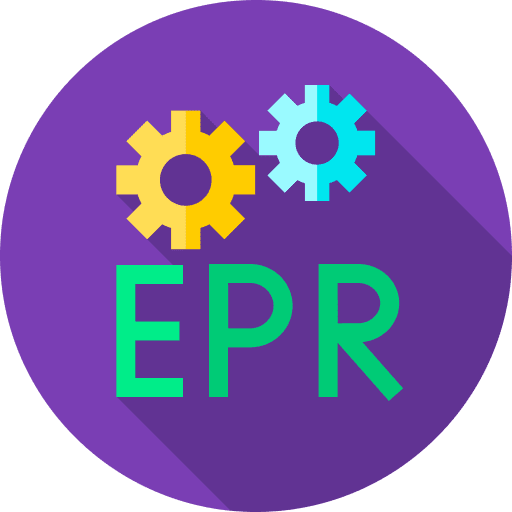In the realm of corporate sustainability, the concept of “takeback programs” often invokes thoughts of obligatory tasks, prompted by extended producer responsibility (EPR) regulations. Yet, this conventional viewpoint barely scratches the surface of the profound potential and importance that takeback programs hold. In this in-depth exploration, we delve into an alternative perspective: that takeback programs are not just about adhering to rules, but pivotal initiatives capable of sparking real change, reshaping industries, and propelling us towards a circular economy.
Table of Contents
ToggleIntroduction: Beyond the Surface Compliance
On first glance, takeback programs might appear as mere tools for meeting legal requirements, a necessary means to check off boxes and fulfill mandates. While it’s true that these programs aid in meeting EPR regulations, reducing them to such a basic role overlooks the bigger picture. Instead of viewing takeback programs as checkboxes, let’s see them as transformative instruments that can guide brands to transcend compliance and integrate sustainable practices into their core identity.
The Multi-Faceted Significance of Takeback Programs
1. Elevating Sustainability Commitment:
Adopting a different perspective urges us to see takeback programs as indicators of a brand’s authentic dedication to sustainability. Rather than just fulfilling a regulatory demand, companies that establish and champion takeback programs showcase their proactive stance towards environmental stewardship. This communicates to stakeholders, customers, and peers that their commitment to the planet goes beyond legal obligations.
Take, for example, the electronics giant Apple. Their “Apple Renew” program encourages customers to return old devices for proper recycling. Not only does this comply with regulations, but it also highlights Apple’s commitment to reducing electronic waste and their eagerness to take responsibility for the entire lifecycle of their products. Such initiatives serve as proof that takeback programs can be powerful signals of a brand’s genuine concern for the environment.
2. Tailoring to the Customer’s Perspective:
In today’s conscientious consumer landscape, where eco-consciousness shapes purchasing choices, takeback programs offer brands a unique way to connect with their customer base. By participating in these programs, companies acknowledge their customers’ values and concerns, fostering a deeper connection that extends beyond simple transactions. This shift from transactional relationships to value-driven partnerships can cultivate brand loyalty and advocacy.
Patagonia, a leading outdoor apparel company, exemplifies this approach with their “Worn Wear” initiative. They buy back used Patagonia gear, repair it, and resell it. This resonates with their environmentally conscious customer base, showcasing a commitment to reducing waste and promoting product longevity. This customer-centric approach has transformed Patagonia from a mere clothing brand to a sustainability advocate.
3. Propelling the Circular Economy:
In contrast to the static notion of regulatory adherence, takeback programs serve as dynamic catalysts for change, nurturing innovation and contributing to the establishment of circular economies. These programs prompt brands to think beyond linear product lifecycles and reimagine production and consumption systems. Through efficient reverse logistics, advanced recycling techniques, and strategic product redesign, takeback programs reintegrate resources into production cycles, curbing waste and conserving raw materials.
Sweden stands as a pioneering example in the pursuit of a circular economy. The country introduced a “Waste Hierarchy” that prioritizes waste prevention, reuse, and recycling over disposal. In the same spirit, Sweden’s takeback programs for electronics have resulted in not only reducing electronic waste but also recovering valuable materials. This approach has reshaped their industry practices and positioned them as leaders in sustainable resource management.
4. Influencing the Supply Chain:
A wholeheartedly embraced takeback program possesses the potential to set off a chain reaction throughout an industry’s supply chain. By developing a comprehensive infrastructure for takeback, brands can establish new industry benchmarks for sustainability practices. This influence ripples through suppliers, partners, and competitors, driving a collective shift towards more responsible and circular business approaches.
Levi’s, the renowned denim brand, has incorporated sustainability into its supply chain through their “Water<Less” program. By designing jeans with reduced water usage and encouraging customers to return old jeans for recycling, Levi’s has not only decreased their environmental footprint but also inspired other brands to consider similar strategies. This ripple effect illustrates how a takeback program’s influence can extend far beyond a single company’s operations.
Unlocking Transformation through a Contrarian Approach
1. Shifting Perception Paradigms:
Embracing a contrarian perspective empowers companies to break away from a narrow view of takeback programs. Instead of seeing them as mundane regulatory tasks, brands can reimagine these programs as strategic enablers of their broader sustainability objectives. This mental shift can ignite innovative thinking, encouraging companies to explore novel ways of reducing waste, recycling, and upcycling.
H&M, a global fashion retailer, has taken a contrarian approach to takeback programs by launching their “Conscious Collection.” This line is crafted from sustainable materials and encourages customers to return old clothing for recycling. By adopting a proactive stance, H&M seeks to redefine fast fashion’s wasteful image, inspiring the industry to embrace circular practices.
2. Proactive Sustainability, Not Reactive Responses:
Companies that embrace a contrarian mindset towards takeback programs recognize that a greener future hinges on proactive steps, not just reactive measures. Instead of merely dealing with waste disposal or recycling at a product’s end-of-life, brands can design products with durability and circularity in mind. This proactive approach minimizes waste generation while maximizing resource usage.
IKEA, the Swedish furniture giant, exemplifies this philosophy through their “Buy Back & Resell” initiative. Customers can return used furniture in exchange for store credit, which IKEA then resells. This approach incentivizes customers to participate in a circular economy while showcasing IKEA’s commitment to extending product lifecycles. This proactive stance aligns with the contrarian viewpoint, emphasizing sustainability as a guiding principle, not just a reaction to regulations.
3. Bridging the Perception-Reality Gap:
Many consumers view takeback programs as token gestures meant solely to appease regulators. However, the contrarian view asserts that these programs can be communication tools, allowing brands to bridge the gap between their intentions and consumers’ perceptions. By educating consumers about the genuine impact of takeback programs, brands showcase authenticity and dedication to a sustainable future.
Dell, a technology leader, has tackled this gap through their “Closed-Loop Recycling.” They use recycled materials from old electronics to create new products, closing the loop on resource consumption. By transparently communicating this process to consumers, Dell dispels the notion that takeback programs are mere regulatory compliance, demonstrating how such initiatives can tangibly contribute to a circular economy.
4. Nurturing a Collaborative Sustainability Ecosystem:
Contrarianism encourages brands to lead in reshaping industry norms. Envision an ecosystem where brands collaborate, share best practices, and collectively elevate takeback program standards. This collaborative approach can surmount challenges, fuel innovation, and expedite the global shift towards a circular economy.
The European Union’s “Circular Economy Action Plan” demonstrates the power of collaborative efforts. By setting ambitious recycling targets, encouraging eco-design, and promoting sustainable business practices, the EU has brought governments, businesses, and citizens together to create a comprehensive approach towards a circular economy. This ecosystem showcases the potential of a united front in achieving sustainable transformation.
Conclusion: Beyond the Checkmark
In conclusion, it’s time to liberate takeback programs from the confines of regulatory checkboxes and recognize their full potential as transformative champions of sustainability. Embracing the contrarian viewpoint compels us to view takeback programs not as mere requirements but as strategic tools that can reshape industries, foster customer loyalty, drive innovation, and contribute to a circular economy. By adopting this perspective, brands can truly embody their commitment to environmental responsibility, effectively rewriting the narrative of narrow compliance. Ultimately, takeback programs can lead the way into a new era of corporate sustainability, redefining how we understand and practice responsible business.
The evolution of takeback programs illustrates their capacity to transcend initial regulatory intent, becoming vehicles for positive change. As brands continue to recognize the value of these programs in fostering sustainability, we move closer to a future where industries operate within the principles of circularity and responsibility. It’s a journey of transformation that requires a shift in mindset, a willingness to challenge conventions, and an unwavering commitment to creating a more sustainable world. The narrative of takeback programs is evolving, and their impact reaches far beyond the checkboxes we once saw them as—propelling us towards a greener, more circular tomorrow.




